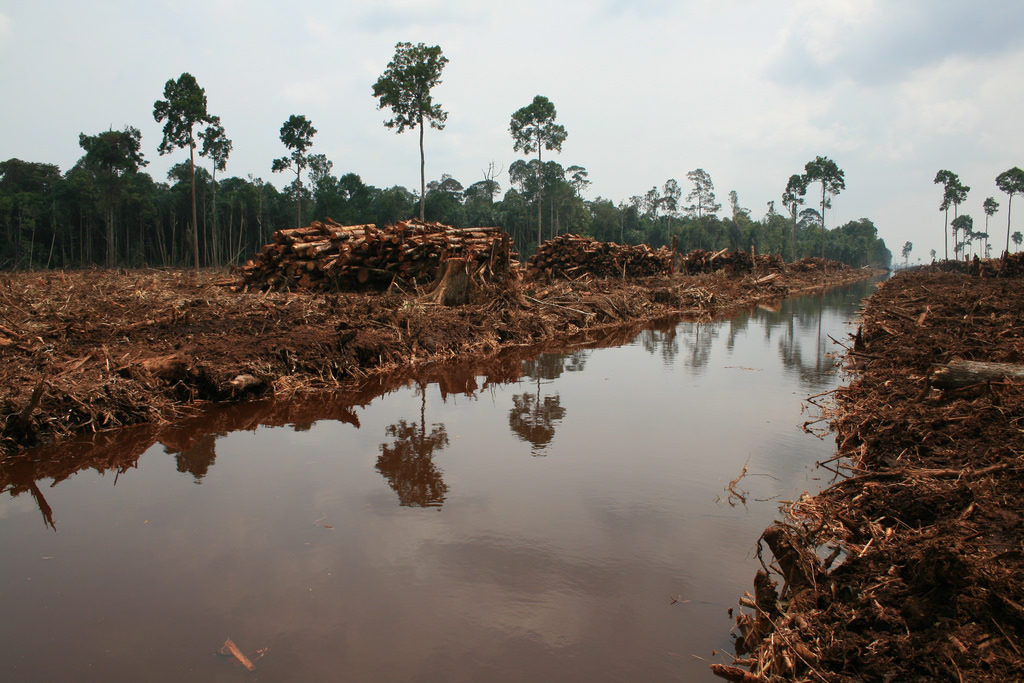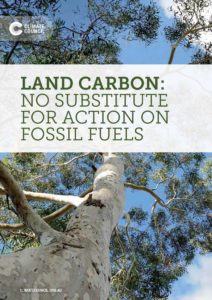2017 was the second-worst year on record for global tropical tree cover loss, according to new data released by the University of Maryland, USA.[1] 39 million acres (157,827 square kilometres) of tree cover was lost in total throughout 2017 – the equivalent to around 40 football fields every minute, or an area roughly the size of New Zealand’s South Island. Forest loss in 2017 was second only to 2016, when 41.7 million acres (168, 754 square kilometres) of tree cover was lost. The three top countries for tropical tree cover loss were Brazil, the Democratic Republic of Congo and Indonesia.
 Indonesia is in the top three countries for tropical tree cover loss. Image: Rainforest Action Network (CC BY-NC 2.0)
Indonesia is in the top three countries for tropical tree cover loss. Image: Rainforest Action Network (CC BY-NC 2.0)
The data, collected by the University of Maryland and summarised by the World Resources Institute and Global Forest Watch, shows that – alongside clearing for agricultural uses – climate change fueled extreme weather events such as fires, droughts and tropical storms have played a large role in tropical forest loss globally in recent years. Over this time, climate change has contributed to making these extreme weather events more frequent and severe. In tropical forests, fires rarely occur without ignition from humans, usually in order to clear land for agricultural uses. Nevertheless, the influence of accelerating climate change has made tropical forests more susceptible to ignition by increasing temperatures and worsening droughts. These climatic trends also make tropical rainforests more prone to damage and degradation when fires do break out.
When forests are cleared or burned (intentionally or unintentionally) they release greenhouse gases, especially carbon dioxide, to the atmosphere. Averaged over 2015 – 2017, global loss of tropical forests contributed about 4.8 billion tonnes of carbon dioxide per year (or about 8-10% of annual human emissions of carbon dioxide) (WRI 2018).
Trees, oceans and soils are important carbon sinks, meaning they draw down carbon dioxide from the atmosphere. However, most of the carbon stored in these sinks is part of an active, relatively quick carbon cycle. As living things die and decay, carbon is released back into the atmosphere. By contrast, carbon dioxide stored as fossil fuels such as coal, oil and gas underground, is relatively stable. Without the influence of humans, carbon dioxide in the form of fossil fuels would be unlikely to reach the atmosphere. When we burn fossil fuels, we are releasing into the atmosphere carbon from dead and decayed plants, animals and phytoplankton that lived hundreds of millions of years ago (before dinosaurs existed), and took millions of years to reach a stable state. Because of this, it is not effective to “offset” greenhouse gas pollution from burning fossil fuels by storing carbon in forests.
As climate change progresses, droughts, tropical storms, heatwaves and fire weather are projected to increase in severity and frequency. This will continue to result in increases in forest losses, contributing to more and more carbon dioxide being released into the atmosphere. Relying on the safe and stable ‘storage’ of carbon dioxide in forests and other natural carbon sinks will become increasingly risky. Risks are significantly reduced but not avoided by keeping the rise in global temperature well below 2°C.
Globally, it is crucial to address the issue of deforestation, along with continuing to rehabilitate and replant forests that have been cut down in the past in order to slow down temperature rise in the short term by drawing down carbon dioxide from the atmosphere. At the same time, we must never lose sight of the need to deeply and rapidly reduce greenhouse gas pollution levels from fossil fuels – coal, oil and gas. If we do only the former and not the latter, we risk transforming more and more of our carbon sinks into carbon sources as climate change progresses.
To learn more about this topic, read our report:
Land Carbon: No Substitute for Action on Fossil Fuels
Note: The article was written to accompany this video from The YEARS project – and to contextualise the video a little more in terms of our position on land carbon.
[1] Tree cover loss refers to the loss of tree canopy in natural forests and plantations due to human or natural causes, including fire. The data on tree cover loss was produced through analysis of about a million satellite images by the University of Maryland and Google, which enabled measurement of the death or removal of trees at least 5 meters tall within 30 x 30 meter areas. In contrast, other datasets such as PRODES use a definition of deforestation as being new, clear-cut deforestation of primary forest in areas larger than 6.25 hectares. Once deforestation occurs, the area is excluded from future monitoring by PRODES even if the forest regrows and is cut down again. You can read more about this here.
WRI (2018) By the Numbers: The Value of Tropical Forests in the Climate Change Equation. Accessed: https://www.wri.org/blog/2018/10/numbers-value-tropical-forests-climate-change-equation
